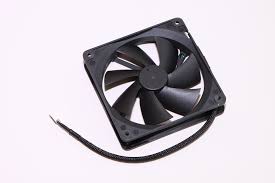An average furnace can serve you for 15 or more years depending on how well you maintain it. Good furnace maintenance also lowers the chances of carbon monoxide poisoning, culminating to numerous health benefits. However, the bottom line is to cut off the high initial cost of buying and installing a new furnace while you can still salvage the one you have. Below are tips on furnace maintenance: how to extend the life of your furnace.
Thermostat complications
 Furnace thermostats are rarely problematic. Despite their long-life features, they usually undergo wear and tear that may come about as a result of bad storage. The development of rust owing to high humidity levels can perforate the thermostat – releasing the gas in it into the air. Note the thermostat is a vital furnace component. Your furnace is subsequently only as good as the thermostat’s state. Thermostat replacement is one of the maintenance stints that you can handle with the help of home care appliances’ repair experts.
Furnace thermostats are rarely problematic. Despite their long-life features, they usually undergo wear and tear that may come about as a result of bad storage. The development of rust owing to high humidity levels can perforate the thermostat – releasing the gas in it into the air. Note the thermostat is a vital furnace component. Your furnace is subsequently only as good as the thermostat’s state. Thermostat replacement is one of the maintenance stints that you can handle with the help of home care appliances’ repair experts.
Have maintenance schedule
Consider how frequently you use your furnace and draw a maintenance plan from that. If you use the furnace more during spring or fall, then you need to tailor the maintenance schedule during either of these two seasons. This is the time to undertake professional tune-ups that gear toward detection and rectification of gas leak problems. Fixing the leaks helps you to keep the furnace motor in good shape – cutting down on imminent costly maintenances.
Filter replacement
Air circulation problems within a furnace’s system can lead to disappointments. You can avoid this by taking care of the air filtration system to improve quality air circulation. Most manufactures recommend that furnace filters be changed every month. Dirty or half-operational furnace filters can lead to domestic fires. This is because a dirty furnace filter clogs its system and creates explosive gas pressure points.
Regular cleaning
The durability aspects of a furnace improve when its cleaned from time-to-time. Proper cleaning removes smoke clutter that may block the gas from reaching the burners. This means that you spend more time during meal preparations. You subsequently use more gas, and this brings about wastage aspects that rocket your home’s overhead bills. Remember to use less corrosive detergents for the clean up since you don’t want the furnace to lose face by losing its original color ambiance. Involve a furnace care expert once in a while to help you with the cleaning stint because they can take the appliance’s components apart, clean it, and reassemble it back together.
Prevention is the best medicine
The secret to avoiding costly furnace maintenance situations is to have the heating appliance frequently inspected for faults. Seasoned furnace repair and installation experts are always a phone call away, and they deliver quality clean-up services at affordable prices
However, this is only possible if you can use a furnace repairman who understands the value of installing quality spare parts. He or she should uphold professionalism besides having the right recommendations and certifications. Otherwise, you may end up throwing good money after bad money.…



 Balanced Ventilation
Balanced Ventilation